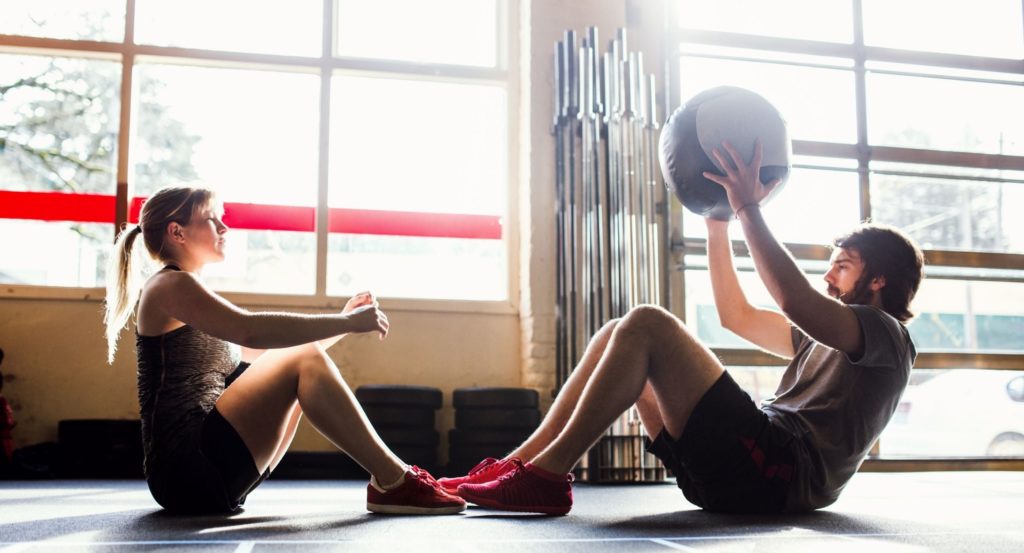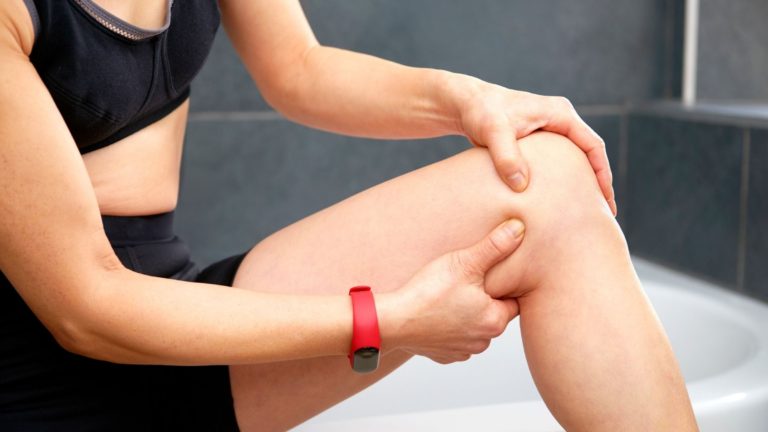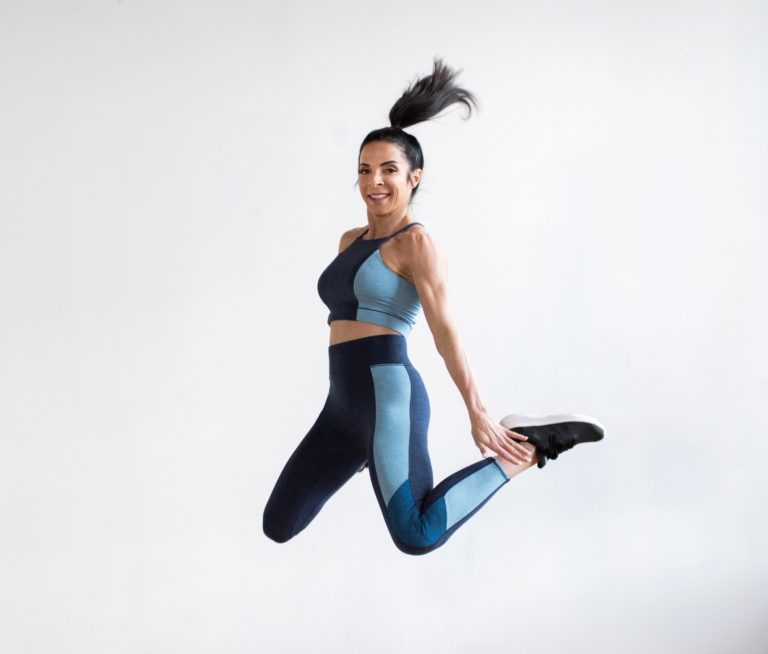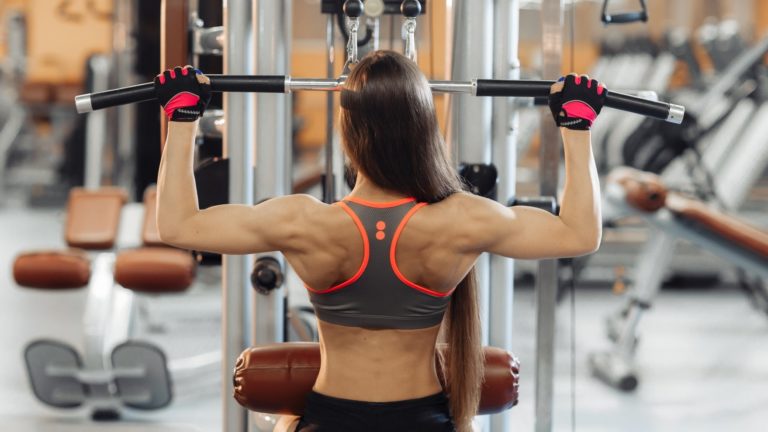
The Partner Ab Workout for Core Strength and Stability

Get access to everything we publish when you
sign up for Outside+.
Abdominal training tends to be a lonely endeavor. We’ll do bench presses, seated presses, squats and even curls with someone in tow who can give a spot and motivate us past sticking points — but then we take our mat and tuck off to a corner by ourselves to pump out sets of crunches, leg lifts and planks.
Our response to that is, Why not have a training partner for abs? Grabbing a friend or significant other to train your core with will give your efforts a boost, turning what can sometimes be a boring undertaking into an amazing higher-intensity (and dare we say enjoyable) abdominal routine.
The 2×2 Partner Ab Workout
| Exercise | Sets | Time/Reps |
| Bicycle for 2 | 3 | 60 seconds |
| High-Five Sit-Up | 3 | 12-20 seconds |
| Medicine-Ball Sit-Up and Pass | 3 | 12-20 seconds |
| Medicine-Ball Russian Twist | 3 | 60 seconds |
1. Bicycle for 2
Two decades ago, the American Council on Exercise tested numerous abdominal moves using electromyography equipment to measure muscle stimulation — and the bicycle came out on top. Here, Aaron Viscounte, CSCS, PN1, head coach and manager at Summer’s Fitness in North Canton, Ohio, kicks the bicycle up a notch by adding a partner component.
The move: Lie on the floor with your knees bent 90 degrees and your feet planted; your partner should mirror you, with both your feet in the air, each sole touching the corresponding foot of your partner (i.e., right foot to left foot and left foot to right). Your hands should be on the sides of your head. One partner extends her right leg, pushing her right foot into her partner’s left; the partner will bend her left knee in response while also extending her right leg, so both partners end up with one leg extended and one bent. At this point, each of you will curl your torso off the floor as you rotate, bringing your right elbow toward your left knee. Both of you will then reverse the motion, curling toward the other knee on the next rep. Develop a steady, rhythmic cadence as you move your legs and curl up your elbow to the bent knee each time.
Tips: “A way to make sure you are creating movement through your core is to think about driving your shoulder toward your knee instead of just moving the elbow,” Viscounte says.
2. High-Five Sit-Up
This simple movement comes from Summer Montabone, CSCS, retired IFBB pro fitness athlete and founder of Summer’s Fitness. All that’s required is your partner, an open spot on the floor and a mat if you want one.
The move: Lie on the floor with your knees bent and your feet planted; your partner should mirror you, with her toes in contact with yours. With your hands touching lightly behind your head, you’ll each curl your torso into a full sit-up. At the top of each sit-up, reach to your partner to either high-five or touch fingers, meaning you’ll want to develop a steady cadence so you’re rising and lowering yourself at the same pace as your partner.
Tips: “Think of curling up each piece of your spine as you rise,” Montabone says. “As you rep, think of squeezing inward, like you’re trying to form a canoe shape with your abs.”
3. Medicine-Ball Sit Up and Pass
By adding a medicine ball, either hard or soft, Montabone says you can take the idea of the high-five sit-up one step further by trading the hand slap for a quick exchange.
The move: Assume the same start position as the high-five sit-up but with one partner holding a medicine ball at her chest with both hands. As each person reaches the top, the person with the ball passes it to the other, who takes it in both hands and reverses direction under control to the floor. Repeat the sequence, exchanging the ball on each rep.
Tips: “An advanced exerciser can extend her arms away from her chest as she curls up with the ball,” Montabone suggests. “You can also try to toss the ball up in the air a little so that each partner catches the ball near the top of the move but as they are already on their way downward. This takes a little more timing — and trust — with your partner. Depending on the strength of your throws, you may even need to move your feet and body a little farther away from each other.”
4. Medicine-Ball Russian Twist
Viscounte suggests this exercise as a solid finisher to target the obliques — the muscles running alongside your “six-pack” muscles, which engage whenever you twist your torso.
The move: To start, assume a seated position with your knees slightly bent and your feet together, heels on the floor, back-to-back with your partner — each of you should lean back to about 45 degrees so that your heads are nearly touching. (The lean activates your core.) One person will start with the medicine ball in both hands, held at her chest, then rotate to the right, reaching to pass the ball to her partner, who twists to her left to receive it. The person then holding the ball should rotate her torso all the way around to the right, where they will meet to pass the ball off again. Continue twisting and passing the ball back and forth for a set amount of time or reps.
Tips: “To ensure you’re using your obliques to create the movement instead of your arms, think about keeping the ball in front of your chest as you’re rotating and passing the ball back and forth,” Viscounte says. “To prevent muscle imbalances and promote muscle symmetry, be sure to perform the same number of reps on each side — for instance, you could perform 15 repetitions in each direction or set your timer to 30 seconds in each direction.”
Get Your Game On
“One of my favorite partner ab exercises is a game called ‘tennis ball hockey,’” Montabone says. All you need to play is a tennis ball, a partner and a willingness to channel your inner Wayne Gretzky.
To start, each “player” assumes a plank position head-to-head, with about 4 feet of distance between one another. “Make sure to keep your back flat and shoulders in line with your elbows and wrists while in the plank position,” Montabone instructs. “You can keep your feet together or splay them a little, based on your ability to maintain your balance. It might be hard not to ‘rock’ as the game progresses, but do your best to keep that engaged plank form.”
Here are the rules of the game:
• One person (A) will start with the tennis ball and roll it toward her partner (B), aiming for the space between her arms. The receiving partner (B) must stay up in the plank position and try to stop the ball with one hand so that the other partner (A) does not “score” by passing the ball in between her arms. If the ball does roll through, it’s a point.
• If one player drops to her knees during the game, the other partner scores one point. (If you or your partner are a newer exerciser, you can eliminate this rule or allow one knee- drop a round or even play the entire game on your knees. You and your partner should establish rules that fit your current fitness levels.)
• If one of you takes a shot that goes too far past the left or right side of the receiving partner — i.e., a bad pass — that receiving partner gets a point. You and your partner should decide on a fair “out of bounds” line beforehand.
• “To make the game an even better workout, try switching the hands you roll the ball and receive the ball throughout the game — or even make your partner move side to side a step to stop the ball,” Montabone says. “You can also decide to extend the distance; if you started at 4 feet apart, maybe try 6 feet.”
• For parameters, you can either set an overall time limit on the game, play up to a certain score (such as first to 10 goals wins) or do the game in rounds, such as three to four 45- to 60-second rounds. Keep it friendly, of course — after all, with the abdominal stimulation you’ll receive throughout the match, you can both consider yourself winners.
Published at Fri, 10 Dec 2021 07:29:57 -0800






